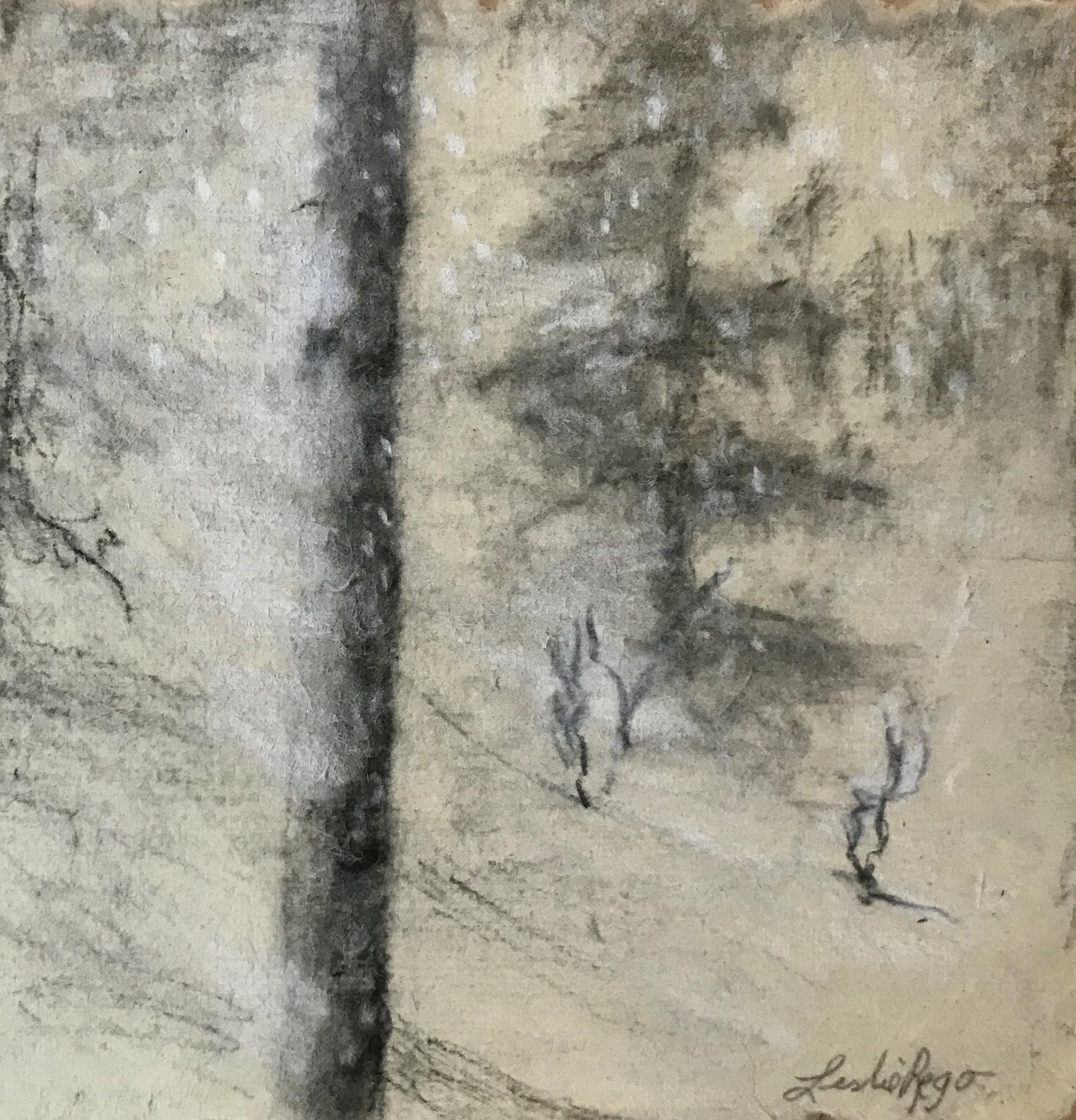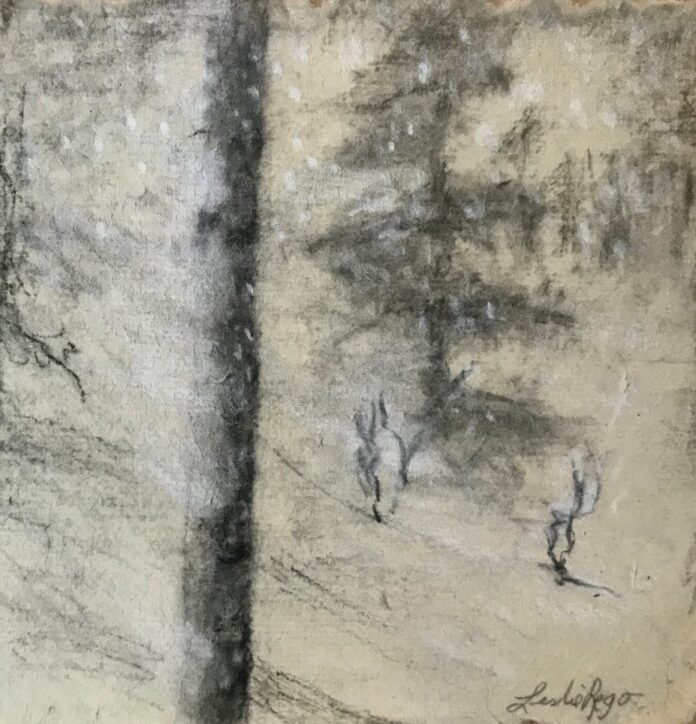BY LESLIE REGO

On a snowy day, the world reduces. Scenery is obscured. Mountains disappear. Peripheral vision narrows. Snowflakes landing on my eyelashes blur my view even more. Edges are like the torn sides of homemade paper, the outer borders feathered and ragged. Accumulated snow causes tree trunks and branches to morph into softer versions of themselves, blending them into the surrounding world.
- Coles Phillips (1880-1927) was a commercial artist famous for creating the “Fadeaway Girl.” Phillips colored part of her clothing the same color as the background of the image, fashioning a faded-out appearance. Phillips’ wife wrote, “His arrangements of the masses, small and large, were to him much more exciting than the color….”
Phillips was interested in a simple and direct graphic impact. He eliminated shadow and highlights to make the image poster-like. Phillips would work for hours to create beautiful negative spaces, which would then become the most important part of the drawing. The fadeaway left the viewer to fill in the information needed to complete the picture.
The fadeaway idea first occurred to Phillips when he visited a friend who was wearing a tuxedo and playing a violin in a very dimly-lit room. Phillips could see little of his friend, but he could still make out the form of the figure from where the light angled across the violin, the tops of the shoes, and parts of the white shirt.
Today, I am seeing “fadeaway trees.” The dim light is hitting one side of the trunks, giving them definition. The other side is blending into the surrounding landscape. Odd shapes form. There must have been wind last night. Fallen branches that never made it to the earth are caught within the twigs of the trees. Snow fills in the interstices. Small amounts of low light filter through the few remaining slits. The trunks are ghostly apparitions, dispersing like mist, the margins ever shifting.
Similar to Phillips’ poster-like images, the shapes I see are flat, but they are constantly evolving. Snow falls down and a new form emerges. The wind picks up and snow drifts across the landscape, obliterating some views and bringing others into focus. Snow caught on the tops of grass plops downward. The grass springs upward, arcing the remaining snowflakes like an arrow letting loose.
An ill-defined world compels the eye to work overtime to clarify the mysteries dwelling within a snowy world.
Leslie Rego is an Idaho Press Club award-winning columnist, artist and Blaine County resident. To view more of Rego’s art, visit www.leslierego.com.



